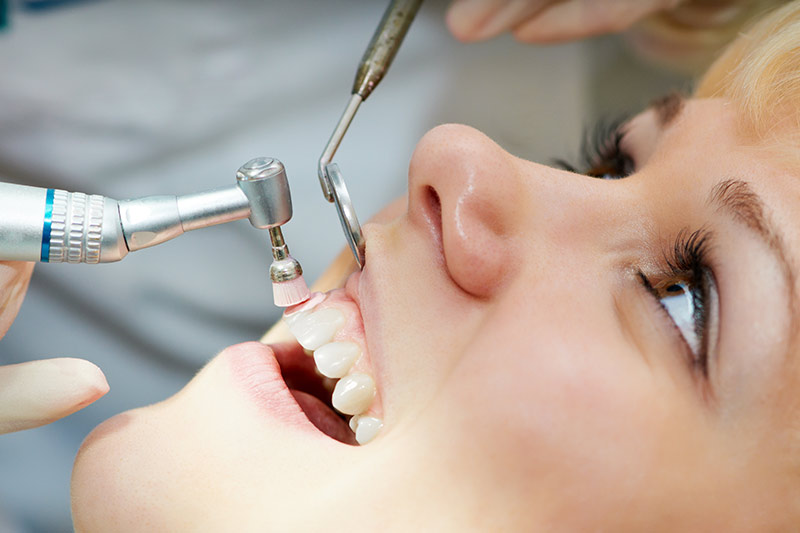
Dental Prophylaxis
Dental prophylaxis is a professional teeth cleaning procedure performed by a dental hygienist or dentist. It is a preventive measure aimed at maintaining oral health and preventing common dental issues.
The primary purpose of dental prophylaxis is to remove dental plaque, calculus (tartar), and stains from the surfaces of the teeth. This helps prevent the development and progression of gum disease (periodontal disease) and other oral health issues.
Dental prophylaxis is typically recommended every six months as part of routine dental care. However, the frequency may vary based on individual oral health needs, the presence of gum disease, and other factors.
The dental prophylaxis procedure involves the following steps:
- Assessment: The dental professional evaluates the patient’s oral health, including the presence of plaque, tartar, and any signs of gum disease.
- Scaling: Using specialized instruments, the dental professional removes plaque and tartar from the surfaces of the teeth and below the gumline.
- Polishing: The teeth are polished to remove surface stains and create a smooth surface that is less susceptible to plaque accumulation.
- Fluoride Treatment: In some cases, a fluoride treatment may be applied to strengthen tooth enamel and help prevent tooth decay.
During dental prophylaxis, the depth of gum pockets may be measured to assess the health of the gums. This helps in detecting and monitoring signs of gum disease.
Dental prophylaxis appointments provide an opportunity for education and counseling. Dental professionals offer guidance on proper oral hygiene practices, including effective brushing and flossing techniques, and may discuss dietary habits that impact oral health.
Dental prophylaxis contributes to the prevention of various dental issues, including gum disease, cavities, and bad breath. Removing plaque and tartar helps maintain a healthy oral environment.
Dental prophylaxis appointments often include a comprehensive oral examination by the dentist. This examination allows for the early detection of dental problems, such as cavities or signs of oral cancer.
Based on the findings during the dental prophylaxis appointment, the dental professional may formulate a personalized treatment plan. This may include recommendations for additional preventive measures or treatments.
Regular dental prophylaxis is an essential part of preventive dental care, helping individuals maintain optimal oral health and preventing the development of dental issues. It is complemented by consistent oral hygiene practices at home, including brushing, flossing, and a balanced diet. Individuals should follow their dentist’s recommendations regarding the frequency of dental prophylaxis appointments for the best results.
